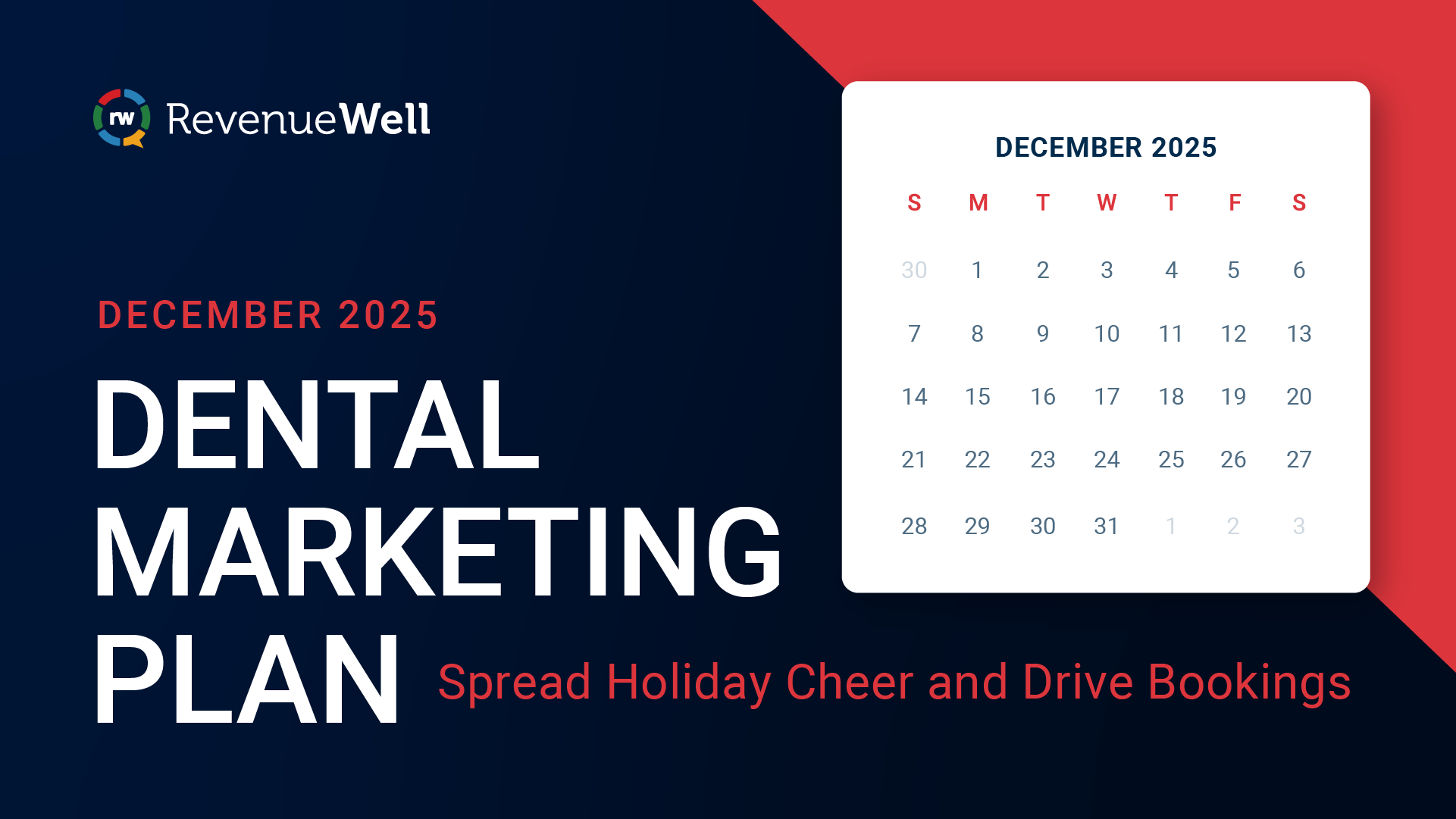5 Effective Ways to Optimize Your Appointment Reminders In Less Than Five Minutes
.jpg)
Appointment reminders are one of the many ways you make it simple for patients to prioritize dental care. When set up correctly, you’ll see a better response rate, fewer no shows and cancellations, and more satisfied patients. With RevenueWell, you can tweak the timing, communication channel, and messaging of each reminder so that every patient is getting their appointments the way they want.
In this post, we’ll share five practical tips to optimize your appointment reminders in your RevenueWell platform.
1. Maximize all available reminders and channels. Your patients are busy, and a dental appointment is one of many things on their minds and their to-do lists. Sending only one or two reminders doesn’t guarantee a patient will remember their appointment. It’s why you need to use every available reminder attempt in RevenueWell. In RevenueWell, you have the flexibility to send multiple reminder attempts through various channels such as emails, texts, and phone calls. Use them all or a combination of channels to get a better response rate.
Depending on your patients, texting is an effective way to reach patients and get a response. Research shows that text has a 98% open rate. But, for some texting is more intrusive than email. And some of your patients may prefer other forms of communication. Experiment with different channels to find out where your patients are more likely to reply.
Tip: Treat your appointment reminders like reservations so patients are motivated to confirm and show up to their appointments. The copy can lead with something like ‘we’ve reserved this [day and time] specifically for you.’
2. Weekend reminders: More miss than hit. It might seem logical to send appointment reminders over the weekend because patients have more free time and are less distracted because they’re not working or in school. However, that’s necessarily the case. In a RevenueWell internal study, we discovered that confirmation rates are lower on the weekends than on weekdays. Reserve your reminders, even for the early in the week appointments, for weekdays only. Your patients are more likely to see and reply to them.
Tip: If your patient has an appointment on Monday or Tuesday, go into your Communication settings, under Advanced settings, to change their reminders to Thursday or Friday of the previous week.
.png)
3. Postcard reminders: Old school but effective. Don’t underestimate the traditional ways of sending messages. Direct mail is back in style and is a way to stand out. You may have some patients who haven’t shared their number and email for different reasons. Also, some patients, particularly older ones, may be less responsive to texts and emails. A 2017 study found that 41% of people over the age of 65 don't use the internet. In such cases, direct mail postcards is the best way to reach them so they’re getting the care they need. Direct mail allows you to add a personal touch to your communications that can be harder to do by text or email. It also gives you the space to show off more of your practice personality.
Tip: Send postcards to patients who don’t have an email or number in your system and are 55+ and older to better serve this patient group. This also helps you keep your costs under control.
.png)
4. Include cancellation or rescheduling policies Don’t forget to include your cancellation or rescheduling policies in your reminders. Even though there will be times when your patients have to cancel for valid reasons, they should still be aware of your cancellation policies. It’s costly to your practice, especially if you can’t fill that slot in time. Missed appointments cost the U.S. healthcare system more than $150 billion a year. A friendly yet firm reminder of your policy, such as, “In order to provide the best care for all our patients, we kindly ask for 24 hours' notice for rescheduling or cancellations," can help reduce no-show rates.
Tip: Consider adding a fee to your cancellation and/or no-show policy and emphasizing that in some of your communications. This helps keep patients accountable, and your practice can potentially collect some revenue from missed appointments.
5. Customize patient communication preferences Each patient is unique, and their communication preferences reflect this. A few complaints about a specific reminder shouldn't result in removing it from your routine. Instead, adjust the communication preferences for those particular patients. RevenueWell's functionality allows you to customize communication methods on a patient-by-patient basis.
Tip: You can adjust the delivery method for each reminder attempt and turn on or off certain reminders if a patient specifically asks you to send fewer messages (eg: no second reminder) to them or to use certain channels (eg: only text and email) over others. As a rule of thumb, it’s smart to send messages to patients who have both confirmed and unconfirmed appointments, so they stay on top of their appointments.
Ready to implement these tactics yourself? Making these small adjustments to your appointments can go a long way improving the patient experience and keeping your schedule full. Head over to your appointment confirmation settings, and see if it helps your response rate.




